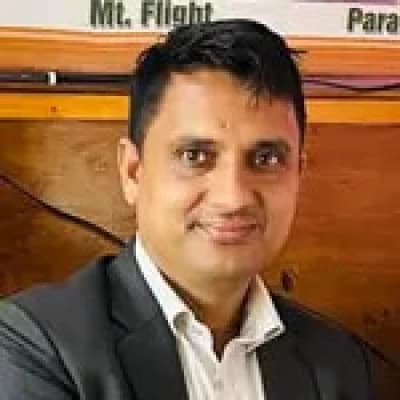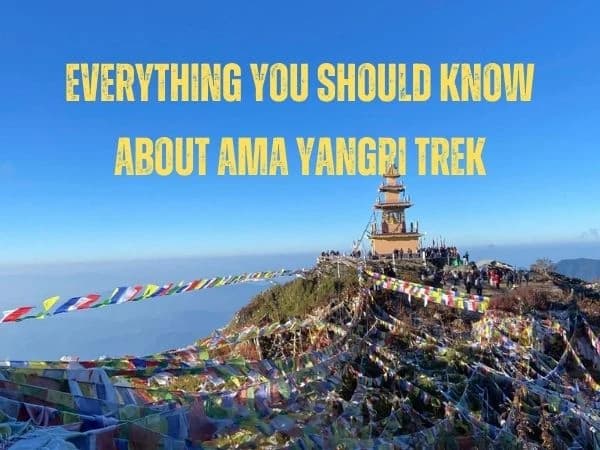To ensure a successful trekking adventure in Nepal, research and preparation is crucial. Here are the key steps to get you started:
1) Assess personal fitness level and trekking experience:
Determine available trekking time:
- Consider the duration of your trip to Nepal.
- Allocate enough time for the trek, including acclimatization and rest days.
- Keep in mind that some treks require a longer time commitment than others.
Research different trekking regions:
- Familiarize yourself with popular regions like Everest, Annapurna, and Langtang
- Learn about the unique landscapes, cultural experiences, and attractions in each region
- Understand the logistics, including transportation options and accommodation availability.
Seek recommendations and read reviews:
- Consult with experienced trekkers, travel agencies, or online forums for recommendations
- Read reviews and testimonials from fellow trekkers to gather insights and make informed decisions
- Consider the reputation and expertise of local guides or trekking agencies.
Consider the best trekking season:
- Learn about Nepal's seasons and weather patterns
- Choose a season that aligns with your preferences and interests
- Consider factors such as visibility, trail conditions, and crowd levels during different seasons.
2) Factors to Consider in Choosing a Trekking Route:
Several factors should influence your decision when selecting a trekking route in Nepal. By carefully considering these factors, you can choose a route that matches your abilities, preferences, and desires.
Here are the key factors to keep in mind:
Difficulty level and physical demands:
- Evaluate the difficulty level of the trek, such as easy, moderate, or strenuous.
- Consider the elevation gain, trail steepness, and daily walking distances.
- Be honest about your fitness level and choose a route that suits your capabilities
Altitude and acclimatization requirements:
- Take into account the maximum altitude of the trekking route.
- Understand the need for gradual acclimatization to prevent altitude sickness.
- Choose a route that incorporates proper acclimatization days and altitude gain strategies
Scenery, landscapes, and cultural experiences:
- Explore the diverse landscapes and natural wonders along the trek.
- Consider the scenic beauty of mountains, valleys, forests, and lakes.
- Research the cultural experiences and encounters with local communities along the route
Safety considerations:
- Prioritize safety by choosing well-established and popular trekking routes.
- Assess the availability of emergency services and evacuation options.
- Stay informed about weather conditions and potential risks during your chosen trekking season.
Permit and fee requirements:
- Understand the necessary permits and fees for the chosen trekking route
- Check the permit regulations and procedures, including the required documents
- Budget for the permit fees and ensure compliance with local regulations
3) Popular Trekking Routes for First-Time Trekkers:
For first-time trekkers in Nepal, several recommended routes offer a perfect blend of adventure and scenic beauty. Let's explore three trekking destinations from the Everest, Annapurna, and Langtang regions, which are considered relatively easier and suitable for a wide age group:
Everest View Trek (Minimum trekking days: 5-8):
- Experience the awe-inspiring Everest region and witness stunning views of Mount Everest and surrounding peaks.
- Trek through Sherpa villages and rhododendron forests, and enjoy panoramic vistas from Tengboche Monastery.
- Best Time to Trek: Spring (March to May) and Autumn (September to November)
- Accommodation: Teahouses along the route provide basic facilities and meals.
- Transportation: Fly from Kathmandu to Lukla, then trek to villages like Namche Bazaar and Khumjung.
Ghorepani Poon Hill Trek (Minimum trekking days: 6-8):
- Explore the beautiful Annapurna region and witness breathtaking sunrise views from Poon Hill.
- Trek through terraced fields, rhododendron forests, and charming Gurung villages.
- Best Time to Trek: Spring (March to May) and Autumn (September to November)
- Accommodation: Teahouses offer comfortable lodging and local cuisine.
Transportation: Drive or fly from Kathmandu to Pokhara, then drive to the trek starting point at Nayapul.
Langtang Valley Trek (Minimum trekking days: 7-9):
- Discover the serene landscapes of the Langtang region, rich in cultural heritage and stunning mountain vistas.
- Trek through rhododendron forests, visit Tamang villages and enjoy panoramic views of Langtang Lirung.
- Best Time to Trek: Spring (March to May) and Autumn (September to November)
- Accommodation: Teahouses with basic amenities and traditional meals.
- Transportation: Drive from Kathmandu to Syabrubesi, the trek starting point.
These treks are relatively easier and suitable for a wide range of age groups, including families with children, older adults, and novice trekkers. However, it's important to maintain a moderate level of fitness and consult with your healthcare provider before embarking on any physical activity.
4) Things to Avoid during the Trek:
- Avoid drinking untreated water from taps or streams to prevent waterborne illnesses. Always use bottled or treated water.
- Avoid rushing. Take your time to acclimatize properly and listen to your body's needs.
- Avoid disrespect. Respect local customs and traditions. Dress modestly and follow cultural etiquette.
- Avoid littering. Maintain cleanliness by properly disposing of waste and carrying it back.
- Avoid pushing yourself beyond your physical limits and take regular breaks.
- Avoid neglecting hydration. Drink plenty of water and stay hydrated throughout the day.
- Avoid downplaying altitude sickness. Pay attention to symptoms and descend to lower altitudes if necessary.
- Avoid overpacking and underpacking. Our guide will provide you will a packing list based on your trekking destination, season, and also your individual needs.
- Avoid straying off from the trails. Stick to the designated trekking trails and follow the guidance of your trekking guide or local authorities.
Finally,
Nepal offers a treasure trove of trekking routes that cater to first-time trekkers. By considering factors such as difficulty level, duration, scenery, safety, and personal preferences, you can choose a route that aligns with your abilities and desires. The Everest View Trek, Ghorepani Poon Hill Trek, and Langtang Valley Trek are excellent options for those seeking relatively easier treks suitable for a wide age group.
Remember to plan your trekking adventure carefully, considering the best time to trek, the type of accommodation available along the route, and the mode of transportation required to reach the starting point. Prioritize safety, acclimatization, and respect for local customs throughout your journey.
As you start to plan on your trekking adventure in Nepal, prepare to be captivated by the majestic Himalayan landscapes, immerse yourself in vibrant cultures, and forge unforgettable memories. Whether you're marveling at the towering peaks of Everest, witnessing breathtaking sunrises from Poon Hill, or exploring the pristine beauty of Langtang Valley, Nepal's trekking routes will leave an indelible mark on your soul.
Have a question? Leave a comment. Our customer service line is open 24/7.
Frequently Asked Questions:
1. Are there any age restrictions for beginners trekking in Nepal?
✔︎ While there are no specific age restrictions, beginners should consider their physical fitness and consult with their healthcare provider, especially for older adults or young children, before undertaking a trek in Nepal.
2. What are some recommended trekking routes in Nepal for beginners apart from the ones mentioned?
✔︎ Besides the routes mentioned, there are other beginner-friendly treks in Nepal, such as the Mardi Himal Trek, Langtang Gosainkunda Trek, and the Helambu Trek. These routes offer scenic beauty and cultural experiences suitable for beginners.
3. How safe is it for solo beginners to trek in Nepal?
✔︎ Trekking solo in Nepal is generally safe for beginners, but it's advisable to join a guided trek or trek with a group, especially if you lack experience. Traveling with a guide provides additional safety, navigation assistance, and support during the trek.
4. Are there any specific permits or documents required for beginners to trek in Nepal?
✔︎ Yes, depending on the trekking route, beginners may need to obtain permits such as the TIMS (Trekkers' Information Management System) card and the Annapurna Conservation Area Permit (ACAP) or Sagarmatha National Park Entry Permit. These permits can be obtained in Kathmandu or Pokhara.
5. Can beginners expect to have access to medical facilities during their trek in Nepal?
✔︎ While medical facilities are limited in remote trekking areas, popular routes like Everest Base Camp and Annapurna Circuit have basic medical facilities and emergency rescue services available. It's advisable to carry a basic first aid kit and travel insurance that covers emergency medical evacuation.
6. Can I hire a guide or porter for my trek in Nepal?
✔︎ Yes, hiring a guide or porter is a common practice in Nepal. A guide can provide navigation assistance and cultural insights and help ensure your safety during the trek. A porter can carry your heavy backpack, allowing you to trek with less physical strain. Hiring them can enhance your overall trekking experience.
7. How much should I budget for a trek in Nepal?
✔︎ The budget for a trek in Nepal can vary depending on various factors such as the duration of the trek, accommodation choices, food expenses, permits, and transportation. On average, a daily budget of $20 to $40 for food and accommodation is a good estimate. Additional costs include permit fees, transportation to and from the trek starting point, and hiring a guide or porter if desired.
8. What kind of food options are available during the trek?
✔︎ Along popular trekking routes, teahouses offer a variety of meals ranging from Nepali cuisine to international dishes like pasta, noodles, and sandwiches. Vegetarian options are widely available as well. It's advisable to choose well-cooked and hygienic meals to avoid any stomach issues.
9. Are there restroom facilities along the trekking routes?
✔︎ Along the popular trekking routes, teahouses and lodges have shared restroom facilities, which may vary in terms of cleanliness and availability of hot water for showers. In more remote areas, restroom facilities might be basic or limited, and you may need to use outdoor squat toilets. It's always good to carry your toilet paper or wet wipes.
10. What should I do in case of an emergency during the trek?
✔︎ In an emergency, notify your guide or the nearest teahouse/lodge owner immediately. They can assist or arrange for emergency evacuation if required. It's essential to have travel insurance that covers emergency medical evacuation to ensure you are financially protected in such situations.




.webp&w=1200&q=75&dpl=dpl_GQEgKGEDQfqNopFFDYwE3G1bCcFF)
